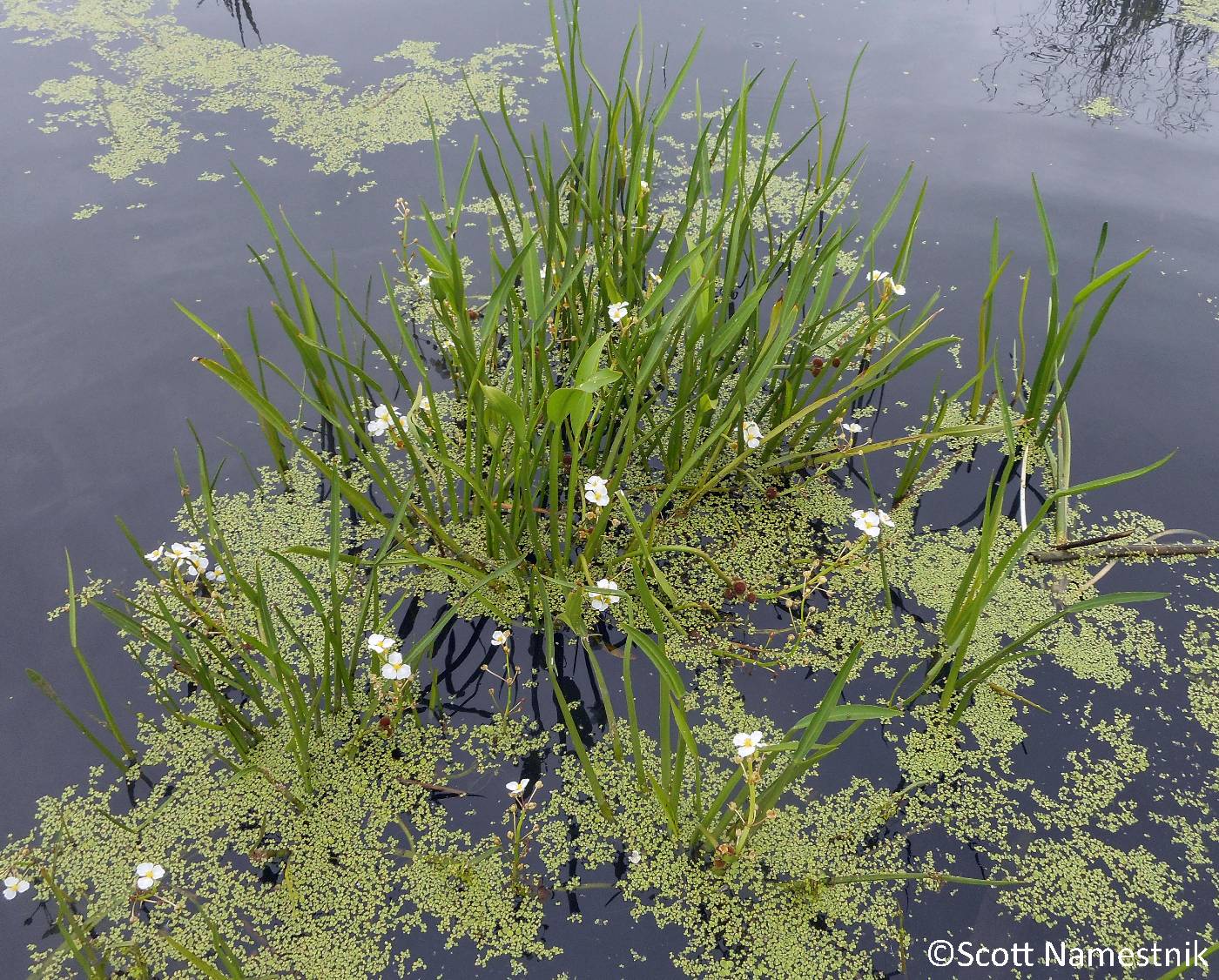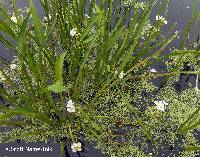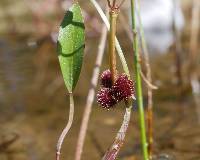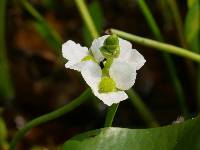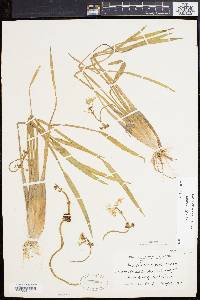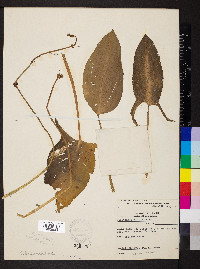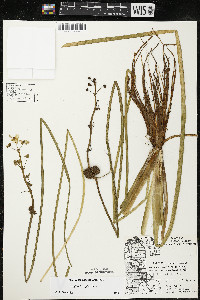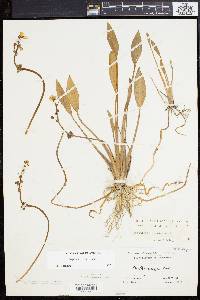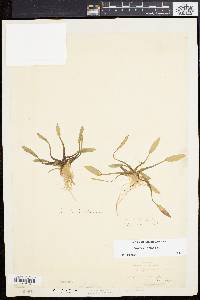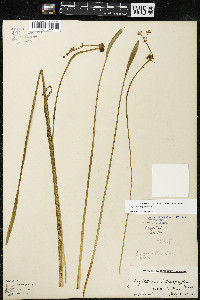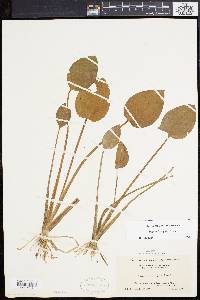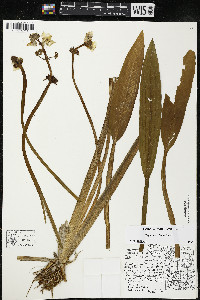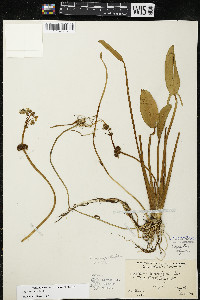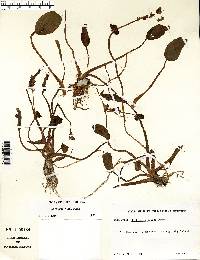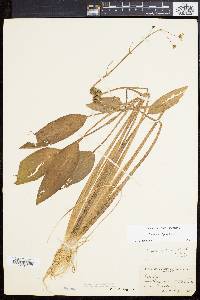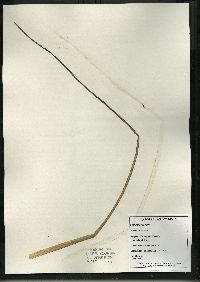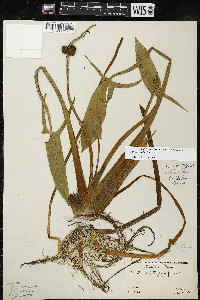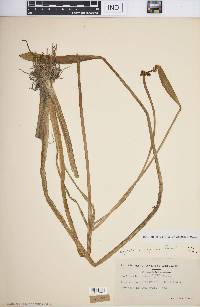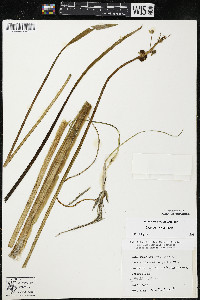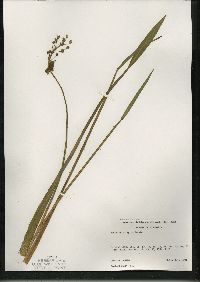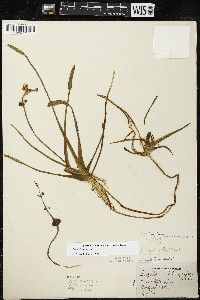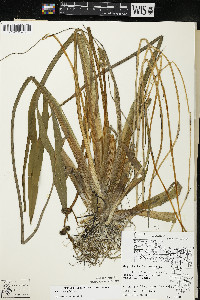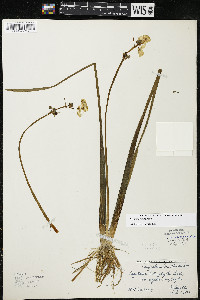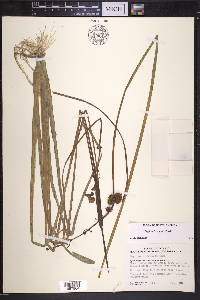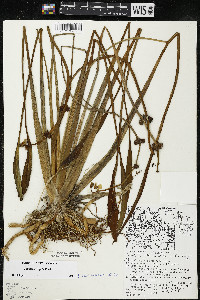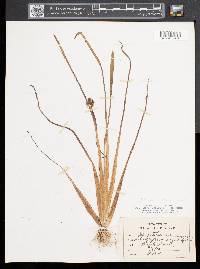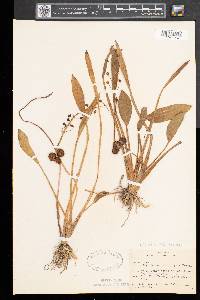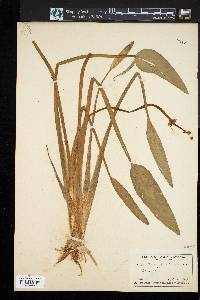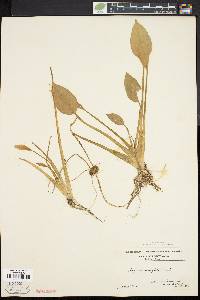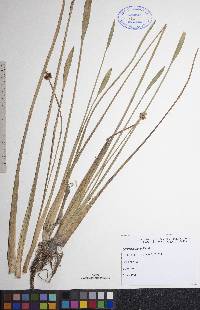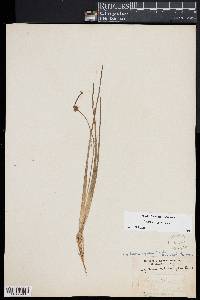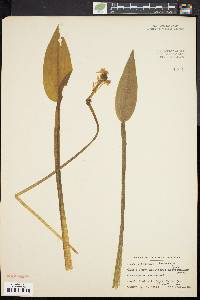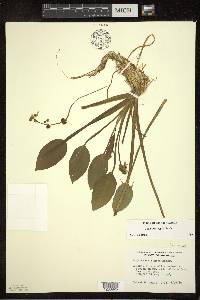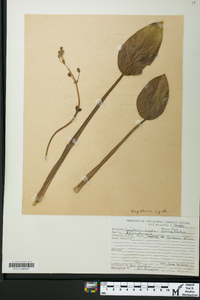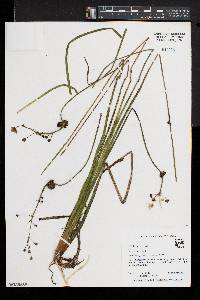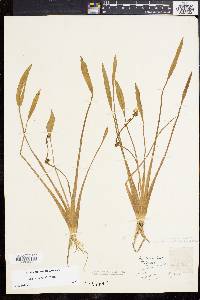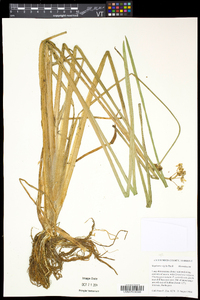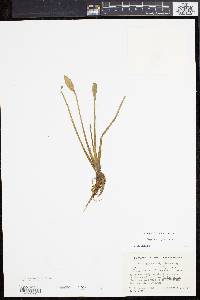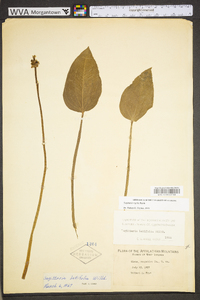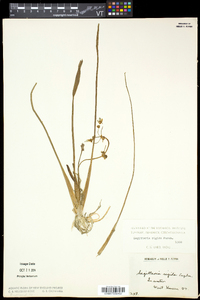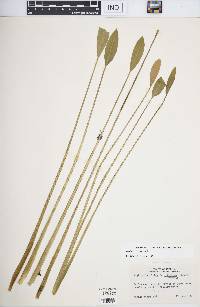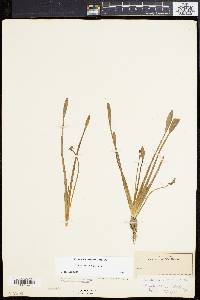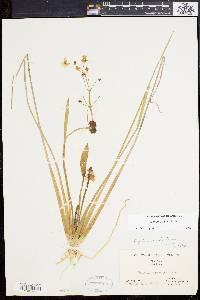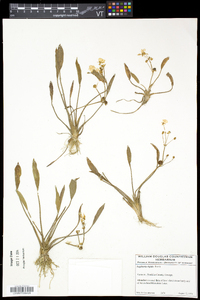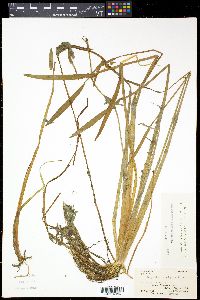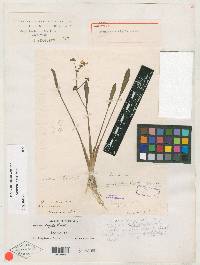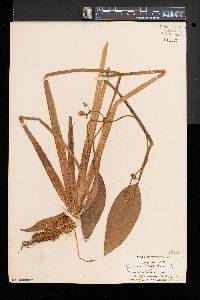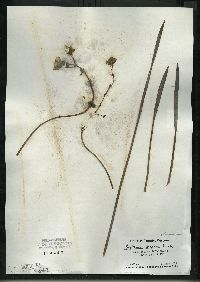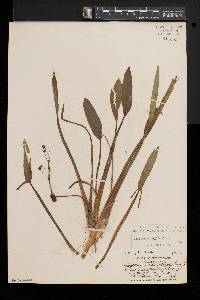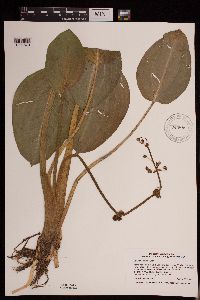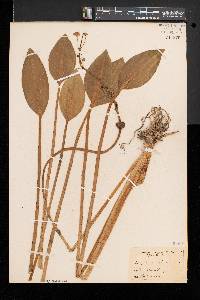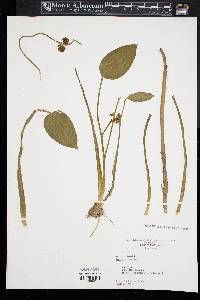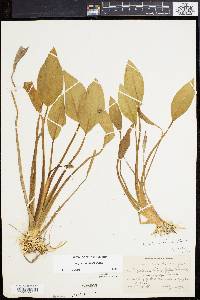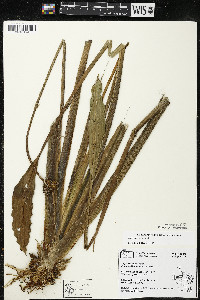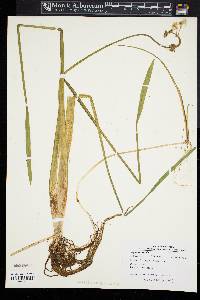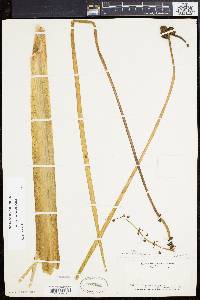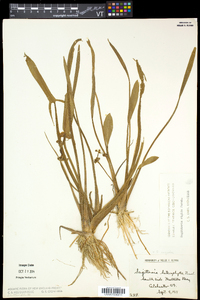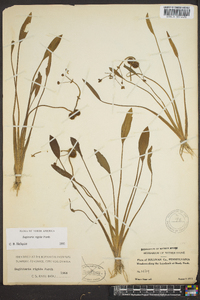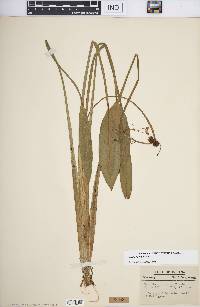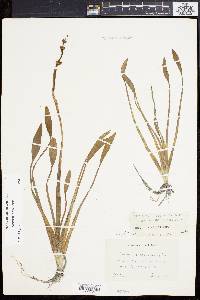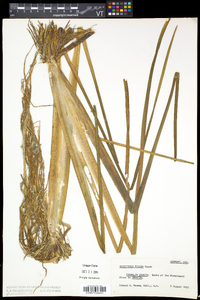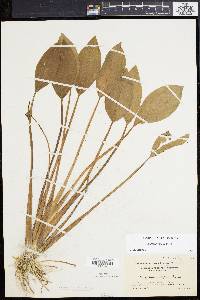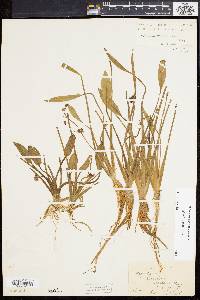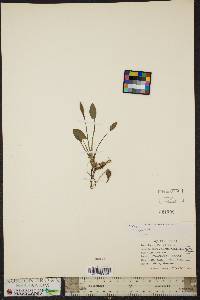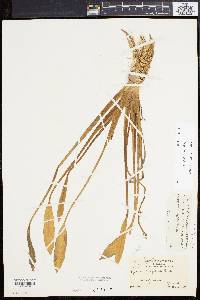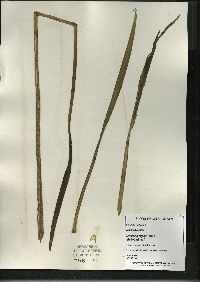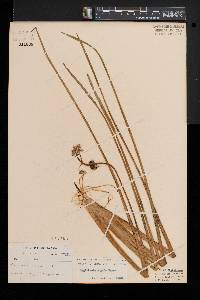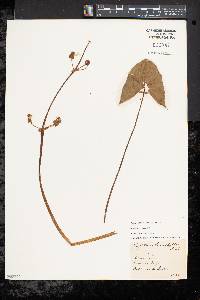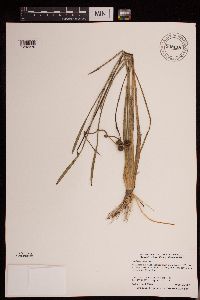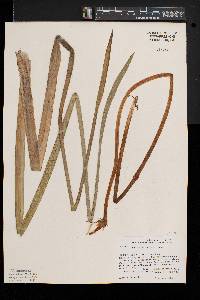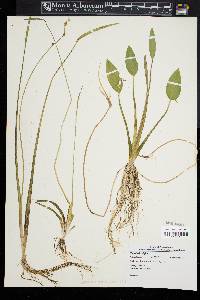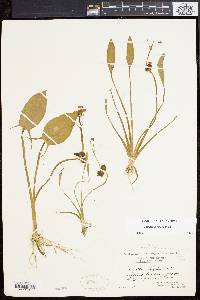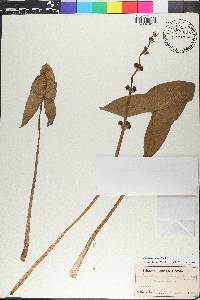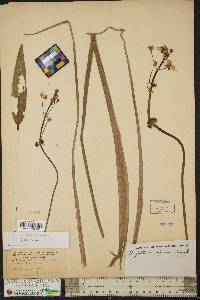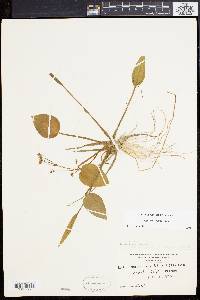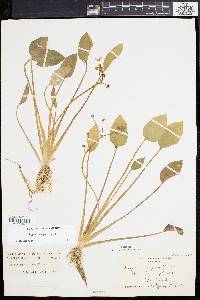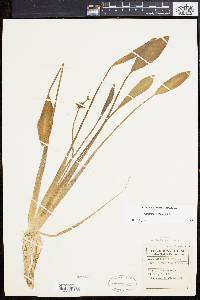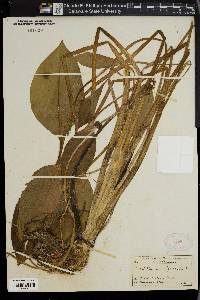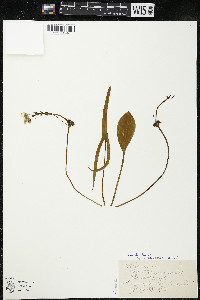Sagittaria rigida
|
|
|
|
Family: Alismataceae
Sessile-Fruit Arrowhead
[Sagittaria rigida f. elliptica (Engelm.) Fernald, moreSagittaria rigida f. fluitans (Engelm.) Fernald] |
Herbs, perennial, to 115 cm; rhizomes absent; stolons present; corms present. Leaves emersed or submersed; submersed leaves phyllodial, flattened, 30--70 cm, rarely widening into blade; emersed leaves phyllodial, flattened, or petiole triangular, 34--50 cm, blade linear to elliptic, rarely hastate to sagittate, 5--15 ´ 0.6--12 cm, basal lobes when present shorter than remainder of blade. Inflorescences racemes, of 2--8 whorls, emersed, 8--10 ´ 2--6 cm; peduncles 10--115 cm; bracts connate more than or equal to ¼ total length, ovate, 3--6 mm, delicate, not papillose; fruiting pedicels absent. Flowers to 3 cm diam.; sepals recurved, not enclosing flower; filaments dilated, shorter than anthers, pubescent; pistillate sessile to subsessile, without ring of sterile stamens. Fruiting heads 1--1.7 cm diam.; achenes obovoid to oblong, abaxially keeled, 2--3 ´ 1.3--1.6 mm, beaked; face not tuberculate, wings 1--2, ± entire, glands 1; beak lateral, recurved, 0.8--1.4 mm. 2n = 22. Flowering summer (Jul--Sep). Calcareous or brackish shallow water and shores of ponds, swamps, and rivers, occasionally in deep water; 0--1000 m; Man., Ont., Que., P.E.I., Sask.; Ark., Calif., Conn., Del., D.C., Idaho, Ill., Ind., Iowa, Kans., Ky., Maine, Md., Mass., Mich., Minn., Mo., Nebr., N.H., N.J., N.Y., Ohio, Pa., R.I., Tenn., Vt., Va., Wash., W.Va., Wis. Perennial aquatic herb to 1.15 m tall Leaves: emersed or submersed. Submersed leaves are 30 cm - 0.7 m long and linear. Emersed leaves on triangular stalks 34 - 50 cm long, linear to elliptic (rarely arrowhead-shaped), 5 - 15 cm long, 0.6 - 12 cm wide, with lobes (when present) narrow and shorter than rest of blade. Inflorescence: emersed, singly stalked along a central axis (raceme), 8 - 10 cm long, 2 - 6 cm wide, arising from a 10 cm - 1.15 m stalk that is usually bent at the lowest whorl, with two to eight whorls of flowers. Flowers: either male or female, found on the same plant (monoecious), with recurved sepals 4 - 7 mm long and three white petals 1 - 3 cm long. Male flowers are borne near the top of the inflorescence, having scaly filaments shorter than the anthers. Female flowers found near base of inflorescence, stalkless or short-stalked. Fruit: a spherical cluster of achenes 1 - 1.7 cm wide. Each achene 2 - 3 mm long, 1.3 - 1.6 m wide, oblong to inversely egg-shaped, with a horizontal and recurved beak 0.8 - 1.4 mm long. Bracts: 3 - 6 mm long, egg-shaped, delicate, fused at least one-quarter the length. Similar species: Sagittaria rigida and Sagittaria graminea almost always lack the arrowhead-shaped leaves of the other Sagittaria species growing in the Chicago Region. Both species nearly always have linear to lance-shaped or narrow egg-shaped leaves as well as flowers with scaly filaments. Sagittaria graminea does not have a bent inflorescence stalk, the flower stalks are usually longer than 1 cm, and the achenes have beaks that are shorter than 0.8 mm. Flowering: mid June to mid September Habitat and ecology: Muddy borders of streams and ditches, shallow water, swamps, margins of ponds, and along waterways. Occurence in the Chicago region: native Etymology: Sagittaria comes from the Latin word sagitta, meaning arrow, referring to the leaf shape. Rigida means rigid. Author: The Morton Arboretum Erect or lax, emersed or submersed, highly variable according to the habitat; lvs lanceolate and entire, or shortly sagittate with narrow basal lobes, or phyllodial; scape 1-8 dm, with 2-8 whorls of fls, typically geniculate at the lowest whorl, the upper fls staminate on filiform pedicels 1.5-3 cm, the lower pistillate, sessile or nearly so (the pedicel sometimes to 5 mm, rarely to 1 cm); bracts ovate, obtuse, 4-6 mm, connate below, smooth; sep ovate, 4-7 mm, reflexed at maturity; pet 1-3 cm; stamens 15-many; filaments subulate, roughened with minute scales; achenes obovate to oblong, 2-3 mm, narrowly winged on the margins only, usually with a resin-duct on each face; beak 0.8-1.4 mm; 2n=22. In shallow water of swamps and ponds; Me. and Que. to Minn., s. to Va., Tenn., Mo., and Neb. July-Sept. (S. heterophylla) Gleason, Henry A. & Cronquist, Arthur J. 1991. Manual of vascular plants of northeastern United States and adjacent Canada. lxxv + 910 pp. ©The New York Botanical Garden. All rights reserved. Used by permission. From Flora of Indiana (1940) by Charles C. Deam This species is essentially northern in its distribution and is practically restricted to our lake area with a few locations south of it. It is infrequent and found on muddy borders and in ditches. The leaves are extremely variable, ranging from linear to rather broadly elliptic. Three forms have been named, but I believe these ecological fluctuations do not merit names. ...... Indiana Coefficient of Conservatism: C = 10 Wetland Indicator Status: OBL Diagnostic Traits: emergent leaves usually lanceolate to elliptic; pistillate flowers +/- sessile; sepals reflexed; filaments pubescent; achenes 2-3 mm, their beaks >0.8 mm. |

